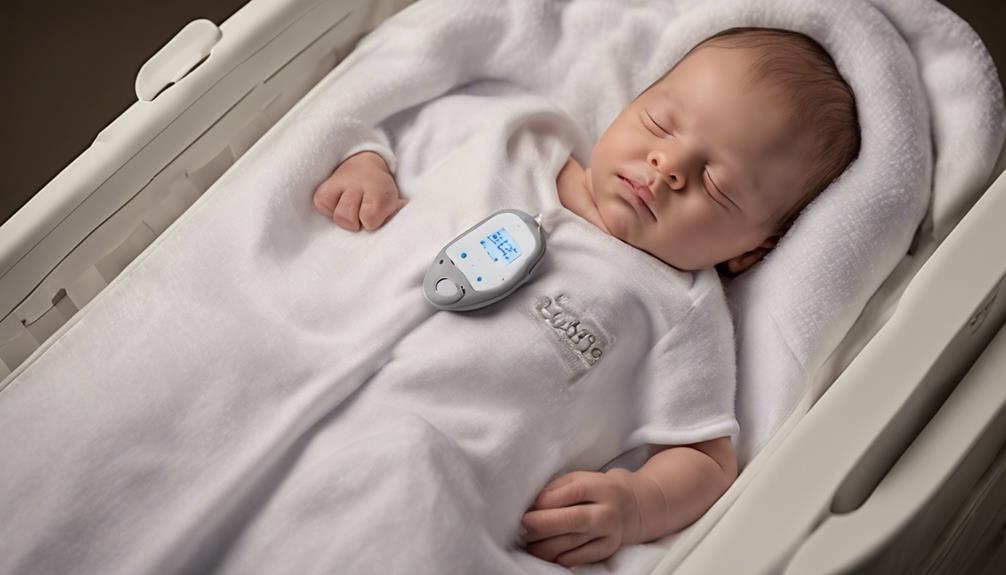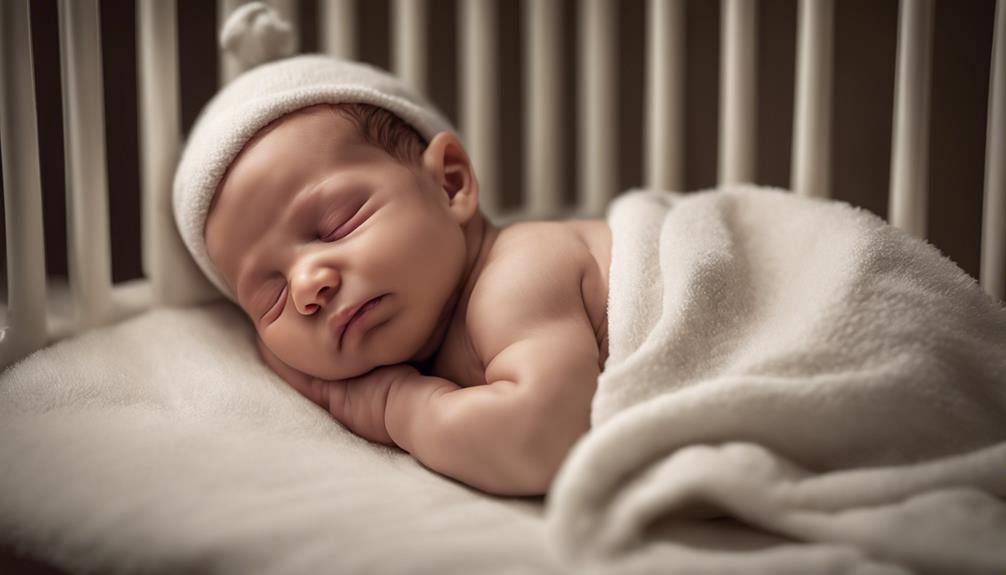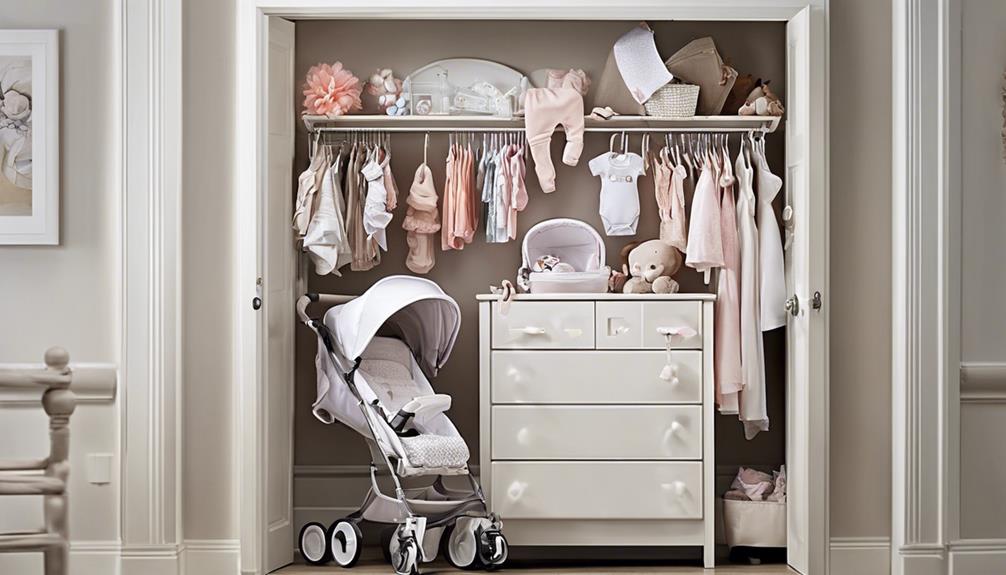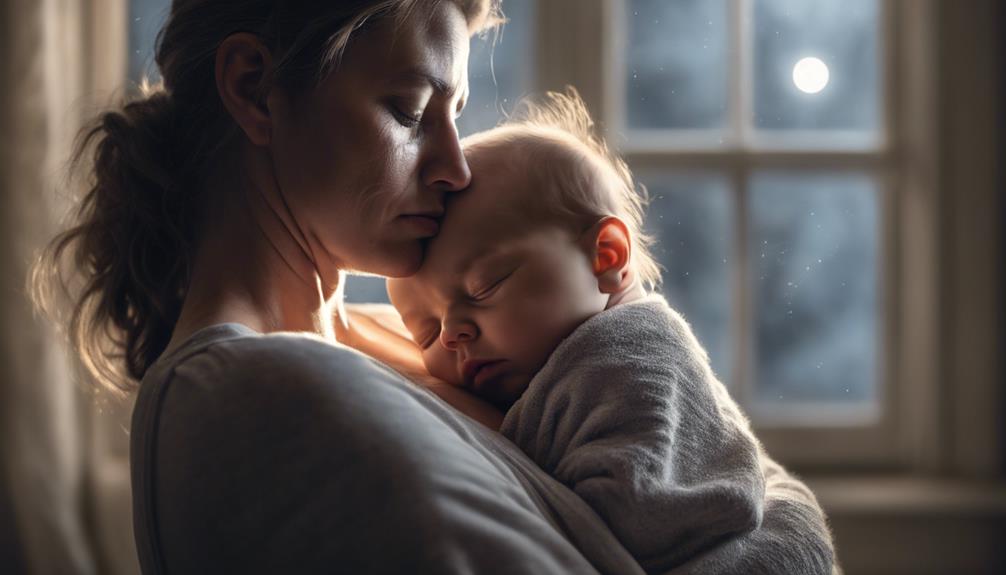So, you've heard about newborn side sleeping, but is it really important? Let's uncover the truth behind this commonly debated practice and explore the potential consequences it may have on your little one's well-being.
As we navigate through the complexities of infant sleep positions, it's essential to weigh the benefits against the risks and understand the guidelines set forth by experts.
Join us as we unravel the mysteries surrounding newborn side sleeping and discover what every parent needs to know to make informed decisions about their baby's sleep routine.
Key Takeaways
- Side sleeping for newborns is not recommended due to increased risks of SIDS and suffocation.
- Back sleeping is the safest position to reduce harm and promote better breathing in infants.
- Consult pediatricians for safe sleep practices and avoid using soft bedding or sleep positioners.
- Prioritize maintaining a safe sleep environment by following expert guidelines and monitoring the baby's position.
Pros and Cons of Side Sleeping
When considering the pros and cons of side sleeping for newborns, it's essential to weigh the potential benefits against the associated risks carefully. Side sleeping can offer advantages for infants such as:
- Aiding in better breathing patterns
- Reducing choking and vomiting episodes
- Promoting improved digestion
- Alleviating pressure on the baby's heart
- Providing a sense of comfort during sleep
Additionally, side sleeping may help with snoring issues and keep the airways more open compared to back sleeping.
However, side sleeping does come with its risks. Infants who consistently sleep on their sides may be at a higher risk of:
- Developing flat head syndrome
- Torticollis
- Increased chance of SIDS
- Changes in ear shape
- Potentially impacting brain development
While the benefits of side sleeping for infants are notable, it's important to balance them with the potential risks to ensure the safety and well-being of the child.
Safety Concerns and Risks

Considering the potential risks associated with side sleeping for newborns, it's pivotal to prioritize safety and adhere to recommended sleep guidelines to minimize harm and guarantee the well-being of the infant. Side sleeping increases the risk of Sudden Infant Death Syndrome (SIDS), suffocation, decreased oxygen levels, and potential neck strain in infants.
Prolonged side sleeping can lead to the development of torticollis, a condition affecting neck muscles. Additionally, babies who side sleep may experience Harlequin color change more frequently.
To guarantee the safety of infants, it's essential to follow safe sleep guidelines that advise against side sleeping. By avoiding this position, the risk of harm can be reduced, and the likelihood of adverse effects such as SIDS and suffocation can be minimized. Prioritizing safe sleep practices is essential in safeguarding the well-being of newborns and promoting a secure sleeping environment.
Best Sleeping Position for Newborns

Given the importance of prioritizing newborn safety during sleep, understanding the best sleeping position for infants is essential in ensuring their well-being. Placing newborns on their back is the safest sleep position recommended to reduce the risk of Sudden Infant Death Syndrome (SIDS).
While babies may naturally gravitate towards sleeping on their side, it's vital to gently guide them onto their back for the best safety. It's normal for newborns to shift positions during sleep, and it's not necessary to constantly adjust them as long as they start on their back.
To maintain a safe sleep environment, avoid using pillows, blankets, or sleep positioners in the crib. If there are concerns about newborn rolling or sleep positioning, consulting a pediatrician is advisable.
Preventing Side Sleeping

To prevent unintentional side sleeping in newborns, we should prioritize initially placing the baby on their back and closely monitoring their sleep position. It's important for parents to be vigilant about the baby's sleep posture to make certain they remain on their back, reducing the risk of side sleeping.
Here are some key strategies to prevent side sleeping:
- Regularly Check Position: Monitor the baby's sleeping position to prevent any accidental rolling onto their side during sleep.
- Consult with Experts: Seek guidance from a pediatrician or sleep expert if the baby consistently rolls onto their side for safe sleep advice.
- Encourage Tummy Time: Engage the baby in supervised tummy time when awake to strengthen their muscles and discourage side sleeping tendencies.
Expert Tips for Safe Sleep

Based on expert recommendations, prioritizing back sleeping for newborns is important to promote safe sleep practices and reduce the risk of SIDS. Side sleeping has been associated with an increased risk of suffocation and decreased oxygen levels in infants, making it a less safe option.
To create a secure sleep environment for your newborn, it's essential to adhere to safe sleep guidelines. This includes placing your baby on their back on a firm mattress without any soft bedding, pillows, or sleep positioners in the crib. These precautions help minimize the risk factors that could contribute to SIDS or other sleep-related incidents.
If you have any concerns about your newborn's sleep position or the safety of their sleep environment, consulting a pediatrician can provide you with expert guidance tailored to your specific situation. Prioritizing safe sleep practices from the start can significantly reduce the chances of harm to your precious little one.
Frequently Asked Questions
What if My Newborn Turns to His Side While Sleeping?
If our newborn turns to their side during sleep, we should calmly observe without excessive adjustment. Avoid pillows, blankets, and sleep positioners. Consult a pediatrician if concerned. Follow safe sleep guidelines to reduce SIDS risk.
Should Babies Sleep on Their Side or Their to Decrease the Chances of Sids?
We advise against side sleeping for babies to decrease SIDS risk. Placing infants on their back is the safest sleep position. It is important to follow AAP guidelines for safe sleep practices to guarantee the well-being of newborns.
Is It OK if Baby Rolls Over in Sleep?
If baby rolls over during sleep, it's generally safe once they can turn their head and lift it independently. It's a normal milestone showing increased mobility and muscle control. Always guarantee a safe sleep environment.
Can Newborns Sleep on Their Side in a Swaddle?
Yes, newborns can sleep on their side in a swaddle, but consulting a pediatrician first is crucial. Swaddling promotes safe back sleeping until signs of rolling appear. Always prioritize safety and seek professional advice.
Conclusion
To guarantee, when it comes to newborn side sleeping, it's crucial to weigh the pros and cons carefully. Remember, 'Safety first, sleep best.'
By following expert recommendations and implementing safe sleep practices, parents can make certain their little ones rest peacefully and reduce the risk of potential health issues.
Stay informed, stay vigilant, and prioritize your baby's well-being above all else.








